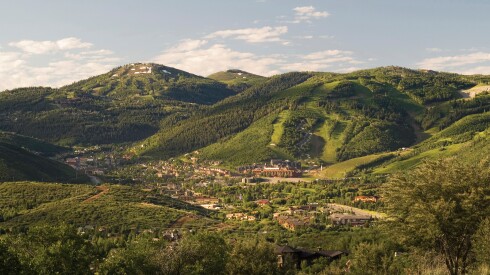North Bali is often overlooked in favor of the flashier beach towns to the south, which is a shame: This chill region has loads to offer travelers that are willing to make the effort, including lush mountains, waterfalls, sacred lakes, and black-sand beaches. Even though Singaraja was the island capital during Dutch colonial times, the pace of life up here is relaxed, and the fiercely independent locals can still find the sight of tourists a curiosity. Here’s what to do when you ditch the crowds and head to the contemplative north.
1. Explore the temples
The temples here in the north of The Island of the Gods are stylistically unique, with many showing splashes of paint or murals depicting the region’s staunch opposition to Dutch colonization. In Buleleng, just a few hundred meters from Pura Beji, Bali’s northern tip, a 15th-century subak temple carved from soft pink sandstone displays walls carved with demons, snakes, and devils. It’s all in honor of the goddess Dewi Sri, the protector of the lifeblood of Balinese village life—the irrigated paddy fields. (The term “subak” refers to a traditional form of irrigation.) Just down the road, the almost empty Pura Dalem temple of the dead evokes fiery scenes of hell on its outer walls, but complete serenity within them.
2. Visit the beautiful Lake Bratan
In the mountainous Bedegul region, just down the road from a lonely and drab Japanese-built golf course, sits Lake Bratan. The lake is housed in an extinct volcanic crater and surrounded by a patchwork of pine and fir forests. The surrounding area is home to waterfalls, various walking trails, and the fabulous Botanical Gardens, which are teeming with exotic birds. As the source of freshwater for thousands of Balinese farmers, Lake Bratan is considered sacred, and is ringed by sublime temples, food markets, and tiny villages that look too good to be true. Find a boatman and arrange a tour of the lake and the tiny islets in the middle of its crisp waters.
3. Eat at the warung
Northern Bali’s fiery, no-fuss cuisine is a source of great pride, whether served at a festival or wedding or simply turned out from one of the ubiquitous warungs—simple shopfronts or tin-roofed lean-tos on the edge of the road or in the market. The jewel in the crown of northern warung fare is bebek betutu gilimanuk, a braised duck slathered with garlic, turmeric, shallots, ginger, lemongrass, and chilies. Some of the best in the country is found in the very northwest, at Goris Market in the hardscrabble Pejarakan Village. Join the line of punters waiting in quiet anticipation to get their fix. Better yet, also buy some babi guling, a spit-roasted suckling pig accompanied by handcrafted sausages, spicy soup, and curried vegetables.
4. Shop with local artisans
The northern Balinese live and celebrate through art. Painting, sculpture, carving, and music are passed on through the generations. On an island of artisans, the north stands apart for its silverwork, jewelry, pottery, and stunning fabrics. Head about 30 kilometers east of the former capital of Singaraja to Desa Pacung and visit the Surya Indigo workshop. The textile artisans here grow their own cotton, dye it with natural plant dyes, and then rack up hundreds of hours weaving on antique back-strap looms. A single scarf can take up to 10 days to create. The shawls are magnificent, and the traditional garments supposedly hold magical powers, protecting the occupier from evil forces.
5. Stay local
Bali has a deserved reputation for offering some of the best, and most affordable, private villas on the planet. In the north, where mid-sized and larger hotels are often drab, painfully soulless affairs, staying local is the way to go. In the northwest, the five beachfront, frangipani-laced villas of Puri Ganesha Villas are restrained and elegant, accented with antiques and fabrics from across the archipelago. Run by a former chef from the United Kingdom, her Indonesian husband, and a stable of Dalmatians, the property is a foodie haven and famous for raw southeast Asian cuisine built on the bedrock of indigenous ingredients. The couple sources locally, hires locally, oversees a foundation that helps raise funds for kids to go to school, and runs heritage and food tours throughout Indonesia.











